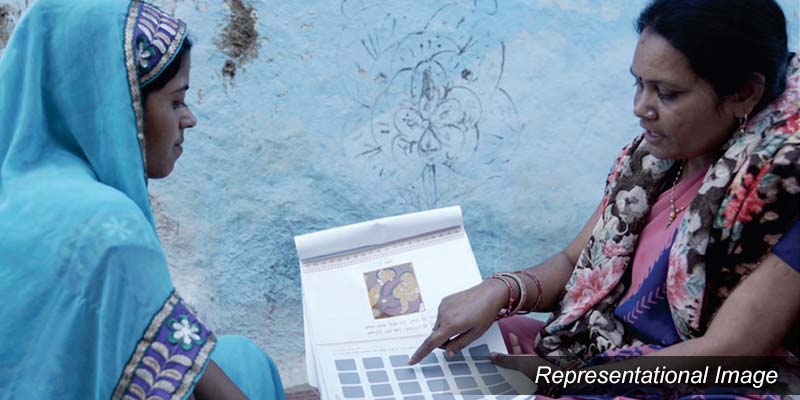- India
- Feb 06
Aspirational Districts Programme emerges as a template for good governance
According to the Economic Survey 2022-23, the Aspirational Districts Programme (ADP) has emerged as a template for good governance, especially in remote and difficult areas.
What is Aspirational Districts Programme?
• The government of India launched the ‘Transformation of Aspirational Districts’ (Aspirational Districts Programme) initiative in January 2018 wherein the focus is to raise living standards of its citizens and ensure inclusive growth of all in the burgeoning economy.
• The districts are prodded and encouraged first to catch up with the best district of their state, and subsequently aspire to become one of the best in the country, by competing with and learning from others in the spirit of competitive and cooperative federalism.
• As many as 117 Aspirational Districts (ADs) across 28 states/UTs have been identified by NITI Aayog based upon composite indicators which have an impact on Human Development Index (HDI).
They are:
i) Health and Nutrition
ii) Education
iii) Agriculture and Water Resources
iv) Financial Inclusion and Skill Development
v) Basic Infrastructure.
The three core principles of the programme are:
i) Convergence (of central & state schemes)
ii) Collaboration (of central, state level nodal officers & district collectors)
iii) Competition among districts through monthly delta ranking.
• With states as the main drivers, this programme focuses on the strength of each district, identifying low-hanging fruits for immediate improvement and measuring progress by ranking districts every month.
• The ranking is based on the incremental progress made across 49 Key Performance Indicators (KPI) under five broad socio-economic themes mentioned above.
• NITI Aayog has developed a broad template for the formulation of district plans. Since different districts have different opportunities and challenges, they have been advised to customise the template.
• A primer comprising steps to be taken to improve each of the indicators, compiled from the inputs received from respective ministries, has also been developed with the help of central ministries and states and shared with district administration.
Achievements of the programme
• Many Aspirational Districts have surpassed the average state values in several indicators under the health and nutrition theme monitored under the programme.
• For instance, in 10 indicators of health, 73 Aspirational Districts have surpassed the state averages.
• The programme monitors progress across five focus sectors. All districts have made significant improvements across different indicators for instance, under health and nutrition, 46 districts have improved by up to 45 per cent, and 23 districts have improved by up to 69 per cent in critical indicators related to pregnant women’s health which have a bearing on the Maternal and Infant Mortality Rates.
• Under education, 46 districts have improved by up to 34 per cent, and 29 districts have improved by up to 49 per cent in critical indicators which affect learning outcomes attained by students such as the percentage of elementary schools complying with Right to Education Act, 2009 (RTE) specified Pupil-Teacher Ratio, percentage of schools with functional drinking water facility and percentage of schools with functional girls’ toilets.
• While monitoring the outcome of financial inclusion, it was seen that Aspirational Districts have performed better than non-Aspirational Districts. This means more people have access to bank accounts, more have been covered under the fold of government insurance schemes and more can secure MUDRA loans in Aspirational Districts.
Several Aspirational Districts have reported saturation in the basic infrastructure indicators like:
i) The percentage of households with electricity connection.
ii) Percentage of habitations with access to all-weather roads under Pradhan Mantri Gram Sadak Yojana (PMGSY).
iii) Cumulative number of kilometres of all-weather road work completed as a percentage of total sanctioned kilometres in the district under PMGSY.
iv) Percentage of households with individual household washrooms, etc.
Template of Good Governance
• The Aspirational Districts Programme (ADP) has emerged as a template for good governance, especially in remote and difficult areas.
• At present, two programmes have been conceptualised along the lines of ADP design, one is ‘Mission Utkarsh’ and the other is ‘Aspirational Blocks Programme’ (ABP).
• On January 22, 2022, ‘Mission Utkarsh’ was launched, under which 15 central ministries, having an interface with the public, have identified their low performing 10-15 districts.
• Following the ADP template, the ministries have launched actions to bring these districts at par with an average district in the state in one year and close to the all-India average in another.
• The central government and states have come together to use the ADP template to identify backward blocks and use similar data monitoring and competition-based programme to improve the most under-developed blocks in the country. In order to further strengthen this initiative, 500 most backward blocks across states and UTs have been identified for rapid development.
Manorama Yearbook app is now available on Google Play Store and iOS App Store


